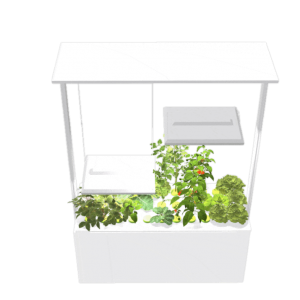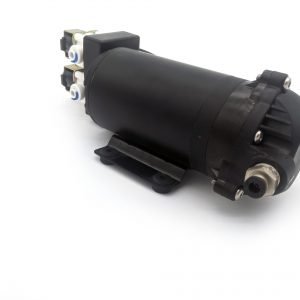
Vertical farming. Aeroponics. Soilless cultivation of plants. The sustainable farming solution goes by many names, and it is on the rise.
People around the world are coming to terms with aeroponics’ significant benefits – and rightly so. The technique allows crops to grow anytime throughout the year, regardless of the weather and temperature conditions.
But it isn’t just the humans who find aeroponic systems convenient and hassle-free. Plants prefer growing aeroponically as well.
And this has been proven a significant number of times by NASA – a strong advocate of the agricultural technique.
In order to understand why plants like growing in aeroponics the best, we’ll have to think from their perspective.
Let’s get to it.
- Nutrients
Most plants need nutrients and water to
- Grow
- Survive
- Germinate
- Reproduce
- Fight off diseases
That’s precisely what they get when grown aeroponically.
As we know, in an aeroponic system, plant roots are not submerged in soil or water. Instead, they are exposed to a nutrient-rich mist.
The solution sets on the root hair cells of the plants. As a result of this precise technique, they get everything they need to grow properly. Additionally, you can control the fruits produced by optimizing the light and moisture inside an aeroponic system.
- Oxygen
In addition to nutrients and water, plants need oxygen for pretty much the same reason human beings do: to convert food into energy (photosynthesis). And they do that by using sunlight or soil.
But in an aeroponic system, there’s no soil or sunlight. So, how do plants get the required oxygen?
To understand that, you have to consider that aeroponically grown plants are suspended in the air, usually a few meters above the ground. It means they have access to atmospheric levels of all important gases, primarily oxygen, which increases plant health and the growth process.
- Irrigation
Plants that receive too much water suffocate, leading to the death of their roots. But that will never happen in an aeroponic system.
‘Why?’
Well, that’s because you manage the irrigation, including the level of water, soil, and gases. This allows you to tailor each plant’s individual requirement, which is a significant advantage considering not all plants require a lot of water to grow, such as
- Agave
- Jade Plant
- Snake Plant
- Pothos
- Cacti
- Disease
In most cases, aeroponic plants are grown indoors, making them less prone to developing mold, weed, and other infections. Furthermore, it eliminates the need to use toxic pesticides, which can hinder a plant’s growth process.
The lower dependency on herbicides isn’t just beneficial for plants but the growers and environment as well.
(Also Read: The Benefits of Growing a Vegetable Garden Hydroponically)
All these factors make aeroponics a safe and effective plant growing technique with whose help you can ensure your indoor garden thrives throughout the year.
Things To Consider Before Building an Aeroponic System
If you choose to build an aeroponic system yourself, it will cost around $100. On the other hand, you’ll have to pay approximately $1000 to purchase a ready-made aeroponic system. It will come fully assembled and ready to use, which won’t be the case if you buy all the parts and build yourself.
Apart from the price, here are a few other things you need to consider:
- Equipment Requirements
- Vertical or Horizontal
- High-Press or Low-Pressure
- Space
- Indoor or outdoor
That’s All, Folks!
Would you like to live in a home with free Wi-Fi, food, and drinks delivered right to you?
That’s how it is for plants when grown aeroponically – minus the Wi-Fi part, of course. No wonder they like the sustainable farming solution so much.
So, you should jump on the bandwagon as well and purchase an aeroponic system. If you’re not sure from where, we’ve got your back. Browse our website to purchase high-quality gardening essentials.





